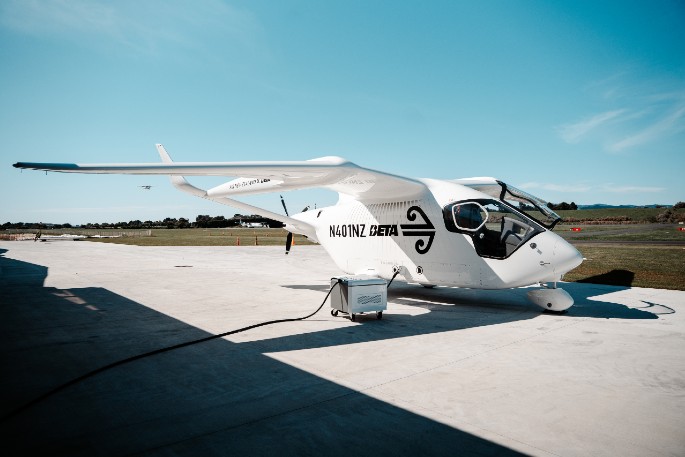This Content Is Only For Subscribers
The first electric aircraft to carry the Air New Zealand name took to the skies on Friday, with the BETA ALIA CX300 completing its first test flight from Tauranga Airport.
Manufactured in the United States by global aviation innovator BETA Technologies, the aircraft arrived in New Zealand recently and was blessed at a sunrise ceremony in Tauranga. It flew to Hamilton Airport later on Friday, where it will be based before moving to Wellington Airport in December for a further two months of testing.
Air New Zealand general manager fleet, networks and strategy Baden Smith says the milestone marks a significant step in the airline’s Next Generation Aircraft programme.
“New Zealand has a proud history of aviation innovation and pushing for progress, whether it’s Richard Pearse who first opened the skies with flying machines, to the era of TEAL flying boats, through to engineers and aviators who connected us to the world.
“It’s incredibly special to partner with a global innovator like BETA to ensure New Zealand is a part of shaping what the future of flight might look like both here and around the world. We know aviation will keep changing – it always has. This is a small, cautious step to learn and be part of that change,” says Baden.
BETA Technologies director of flight operations Chris Caputo says the flight represents “the powerful intersection of pragmatic design and operational innovation”.
“We built the ALIA CX300 on a foundation of simplicity to ensure a fast, safe and efficient path to commercial service. With this ‘Tech Demonstrator’ collaboration, Air New Zealand is not just validating a single aircraft – they are creating the rigorous operational blueprint that will serve as a model for operators around the world who are serious about unlocking low-cost, sustainable connectivity for their regional communities.”
The ALIA CX300 has been leased by Air New Zealand for four months as part of a technical demonstrator programme. The initiative will help the airline and its partners assess how the aircraft performs in New Zealand conditions and support pilot and engineering familiarisation. It will also give the public an opportunity to see battery-electric aviation technology in action.
During its time in Hamilton, Air New Zealand and BETA teams will carry out flights across a range of conditions and altitudes. In December, it will move to Wellington for flights between Wellington and Blenheim.
| Feature | Detail |
|---|---|
| Type | Battery-electric aircraft, conventional take-off and landing (CTOL) |
| Range | Up to approximately 398 kilometres (215 nautical miles) |
| Capacity | Two crew, up to 5.6 cubic metres (200 cubic feet) of cargo |
| Emissions | Zero emissions in flight |
| Design | All-weather deployment and reliability using existing airport infrastructure |
Air New Zealand will introduce its ALIA CX300 pilots in November after the aircraft’s arrival in Hamilton.



